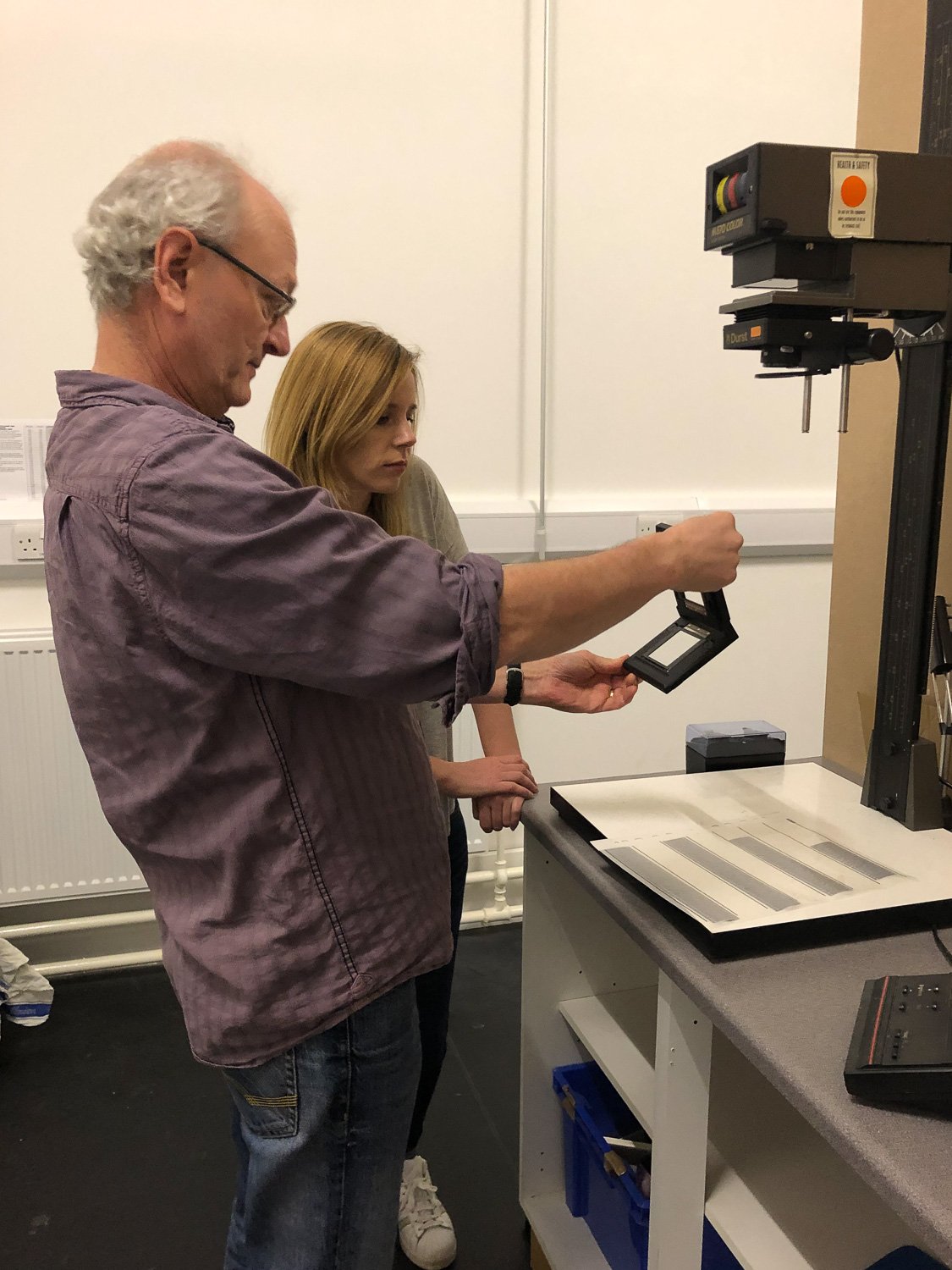In the Darkroom
I shot film, in the good old days of my Kodak Instamatic and Olympus point and shoot, and remember all too well waiting for the prints to come back, anticipation rising often to be reduced to disappointment at the results. What I never did though was develop anything in the darkroom. The process has remained a mystery to me, until fairly recently when I spent a day on a beginner’s course at the Inverness Darkroom, which is a community black and white darkroom housed in the WASPS Creative Academy in the centre of Inverness.
There were only two of us on the course; Ruth had made the 3 hour journey from the north of Skye! Matt, our tutor, gave us a quick run through how to load the camera with film etc, which was just as well because I had forgotten how to do all that! Then we went outside to quickly shoot off our roll of film. It was all a bit strange but oddly familiar at the same time. I’m used to using the camera’s in-built light meter rather than a handheld one, I don’t always manually focus and I obviously don’t wind on after every shot. Initially, the hardest thing to get used to was not being able to check my image in the back of the camera; I just had to let each image go and move onto the next. So the anticipation began!
After that, the day slowed down. The next task was to get the film out of the camera, out of its casing, wind it onto a reel and put it into a developing tank. Doesn’t sound much does it? All that would be a doddle if you could do it with the light on. But that’s out of the question. It has to be done in total darkness. So we practised threading the film onto the reel…without touching much of the film as that ruins it….with our eyes shut. Then we practised in the dark, which I actually found easier. We each had a work space that we laid out with all our materials so each item was in a set place. We again practised winding the film onto the reel. Once we’d mastered that, we then found out that both ends of the film would have to be cut; one at the start before winding onto the reel and then the end to detach it from the spool. Again, in the dark! To cut a long story short, we both managed to get our films out of their casings, cut and loaded onto the reel, and into the developing tank without so much as a nick on any digits.
Once both films were safely in their tanks, the lights went back on and we could move onto preparing the developing solutions. It felt a bit like being back in the chemistry lab at school, making solutions in measuring cylinders. Clock watching was next up as we followed precise timings for each solution being in the tank, with a bit of agitating for good measure, until we’d gone through all three and the film could be washed. And then the moment of truth - did we have usable negatives? There was relief all round when it became apparent that we did.
The afternoon was spent printing by doing test strips, a contact sheet, more test strips and enlarged prints. Again, there were solutions to be made and timings to be observed. I have to say, it is quite exciting to see an image appear before your eyes in the developing solution. It’s very much a process and we both got into a rhythm producing about three prints each by the end of the session.
It was a great day. I’ll be taking out a membership as I will definitely go back. The beauty of becoming a member of the Inverness Darkroom is that you have 24hr access so it is easy to fit a visit in around other commitments. And there are supervised sessions on a Tuesday evening with Matt for sharing tips and tricks. I think I’ll need them!
















